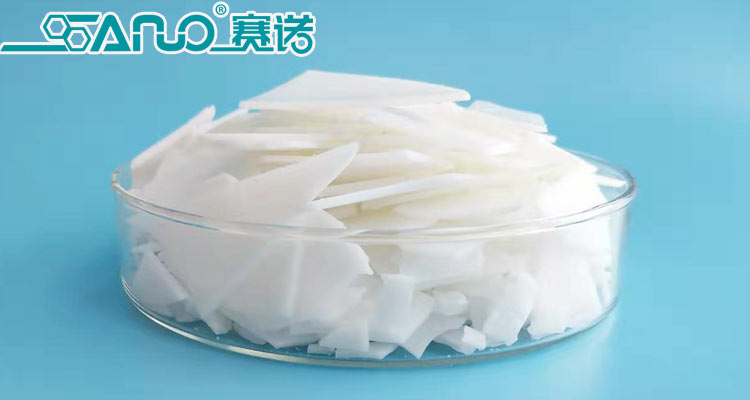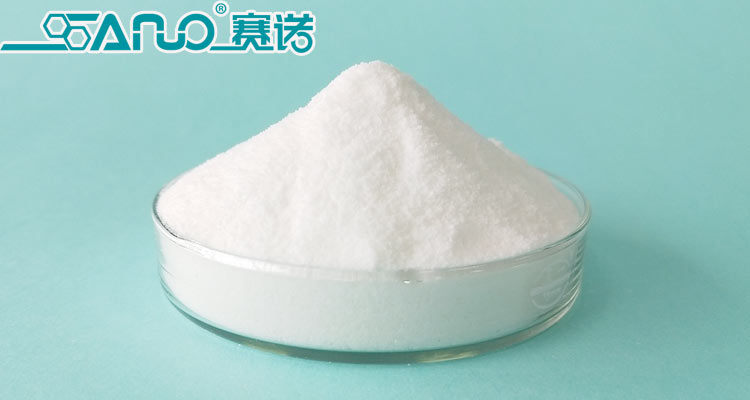Polyethylene wax, also known as polymer wax, is called polyethylene wax for short. It has excellent cold resistance, heat resistance and chemical resistance. As an additive directly added to polyolefin processing in normal production, it can increase the luster and processing performance of products. As a lubricant, pe wax has stable chemical properties and good electrical properties.

Production method of pe wax
Polyethylene wax can be produced in four ways: They are melting method, emulsification method, dispersion method and micronization method.
1. Melting method:
The solvent is added into a closed high-pressure container, and then cooled to produce the finished product; However, the disadvantage of this production method is that it is not easy to be controlled. Once an operation error occurs, it may lead to major accidents, so it is not suitable for the production of some wax.
2. Emulsification method:
Using this method to produce polyethylene wax can obtain finer and rounder particles, which will be more effective if used in aqueous system, but the drawback is that the surfactant will affect the water resistance of the film.
3. Dispersion method:
By adding wax to the solution and then dispersing it with dispersing equipment, the product quality is low and the cost is not low, so it is not recommended.
4. Micronization method:
This method is formed by the mutual collision between raw waxes, gradually forming small particles, screening by centrifugal force according to the quality difference, and finally collecting. This is also the most widely used production method at present.
The general manufacturing methods of polyethylene wax include high-pressure and low-pressure polymerization. The wax obtained under high pressure has branched chain and low melting point. Although the wax obtained under low pressure is relatively hard, it is slightly inferior in smoothness.
Main characteristics of pe wax
It has the properties of low viscosity, high softening point, good hardness, non-toxic, good thermal stability, low high-temperature volatility, dispersion of pigments, excellent external lubrication and strong internal lubrication, which can improve the production efficiency of plastic processing, good moisture resistance at room temperature, strong chemical resistance and excellent electrical performance, and can improve the appearance of finished products.

Application industry of pe wax
1. Waterborne coatings
Adding polyethylene wax emulsion to acrylic resin can improve its hydrophilicity, prevent slipping, prevent adhesion and stain resistance. Pe wax can produce synchronous effects such as wear resistance and scratch resistance, reduce the friction coefficient of the coating surface, and make the sliding tendency greater than the scratch tendency when the object contacts the coating surface. The migration of polyethylene wax powder to the coating surface can greatly reduce the dynamic friction coefficient of the coating surface. Adding polyethylene wax powder to the coating can greatly reduce the tendency of the coating to be polished by friction, so as to maintain the durability of low gloss. Polyethylene wax has obvious extinction characteristics for polyester coatings. In addition, polyethylene wax is also used as an adjusting agent for the melting level flow of powder coatings.
2. Paraffin
Polyethylene wax has good compatibility with paraffin and microcrystalline paraffin. As a paraffin modifier, it can improve the melting point, water resistance, moisture permeability and hardness of paraffin. In the production of candles, adding a certain amount of polyethylene wax can overcome the shortcomings of wax deformation and overflow, and make the crystallization of the product thinner; Overcome its brittleness, increase the hardness and reduce the shrinkage of wax products; In addition, the heat resistance and demoulding property of the candle can be improved. In addition, due to its good electrical properties, polyethylene wax can also be used as an insulating wax modifier for capacitors, transformers and other electrical appliances.
3. Color masterbatch
Pe wax has good compatibility with toner, is easy to wet pigment, and can penetrate into the internal pores of pigment aggregate to weaken cohesion, so that pigment aggregate is easier to break under the action of external shear force, and the newly generated particles can also be quickly wetted and protected. Therefore, it can be used as dispersant and filling masterbatch of various thermoplastic resin color masterbatch, Lubricating dispersant for degrading masterbatch. In addition, polyethylene wax can also reduce the viscosity of the system and improve the fluidity. Therefore, adding polyethylene wax in the production of color masterbatch can improve the production efficiency and yield and stabilize the dispersion effect.
4. Printing ink
Polyethylene wax can be used in polyethylene film, polypropylene film, moisture-proof cellophane, plastic and other packaging materials for fruit sugar, milk, fruit juice, skin care products, medicine bottles, detergents and food, as well as inks for other purposes, such as offset ink. It has a good effect as an ink wear-resistant agent. The particle size of polyethylene wax itself is close to or slightly larger than the thickness of ink film, so it is exposed, reflecting the scratch resistance and scratch prevention characteristics of wax. At the same time, polyethylene wax can form a uniform film on the film surface to protect the ink surface.
5. Road marking paint
After the polyethylene wax is made into toluene dispersion and added into the paint, the light moves to the coating surface and then to the polyethylene wax powder. Through the refraction and diffusion of the powder, the reflection of the light projected on the coating surface in the same direction is weakened, so as to achieve the extinction effect. The extinction effect of polyethylene wax with different particle sizes and varieties is different. In the actual use process, its dosage can be adjusted according to needs.
6. Plastic dyeing
As a pigment dispersant for plastic dyeing, polyethylene wax has the characteristics of good compatibility and heat resistance with plastics, good mixing with pigments, easy crushing, and does not affect the color of terminal products. Polyethylene wax can also bring the same charge on the surface of pigment particles. Based on the same-sex repulsion principle, particles will not attract or aggregate each other, so as to achieve the uniform dispersion of pigment.
Qingdao Sainuo Chemical Co.,Ltd. We are manufacturer for PE wax, PP wax, OPE wax, EVA wax, PEMA, EBS,Zinc/Calcium Stearate…. Our products have passed the REACH, ROHS, PAHS, FDA testing. Sainuo rest assured wax, welcome your inquiry! Website:https://www.sanowax.com
E-mail:sales@qdsainuo.com
sales1@qdsainuo.com
Adress:Room 2702,Block B, Suning Building, Jingkou Road, Licang District, Qingdao, China
Post time: Oct-25-2021
